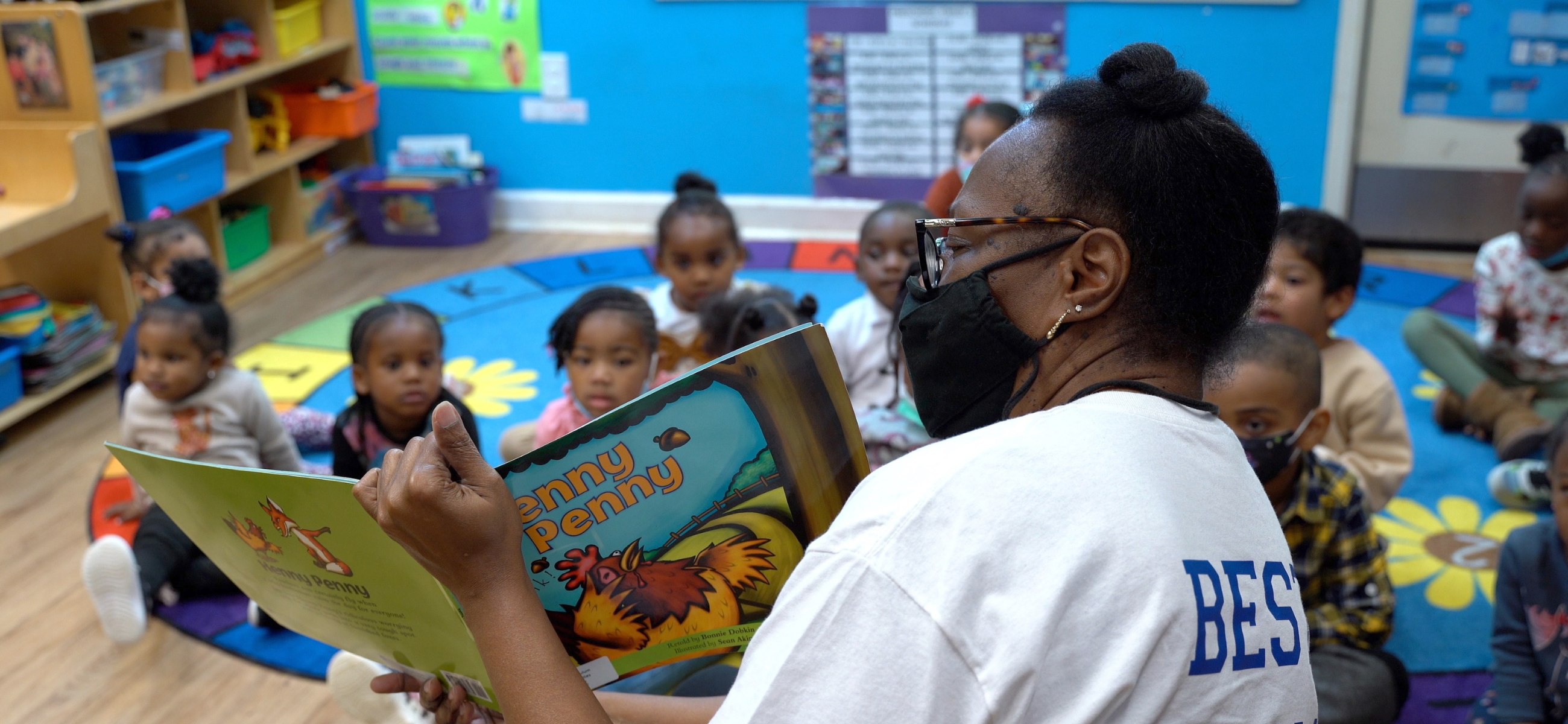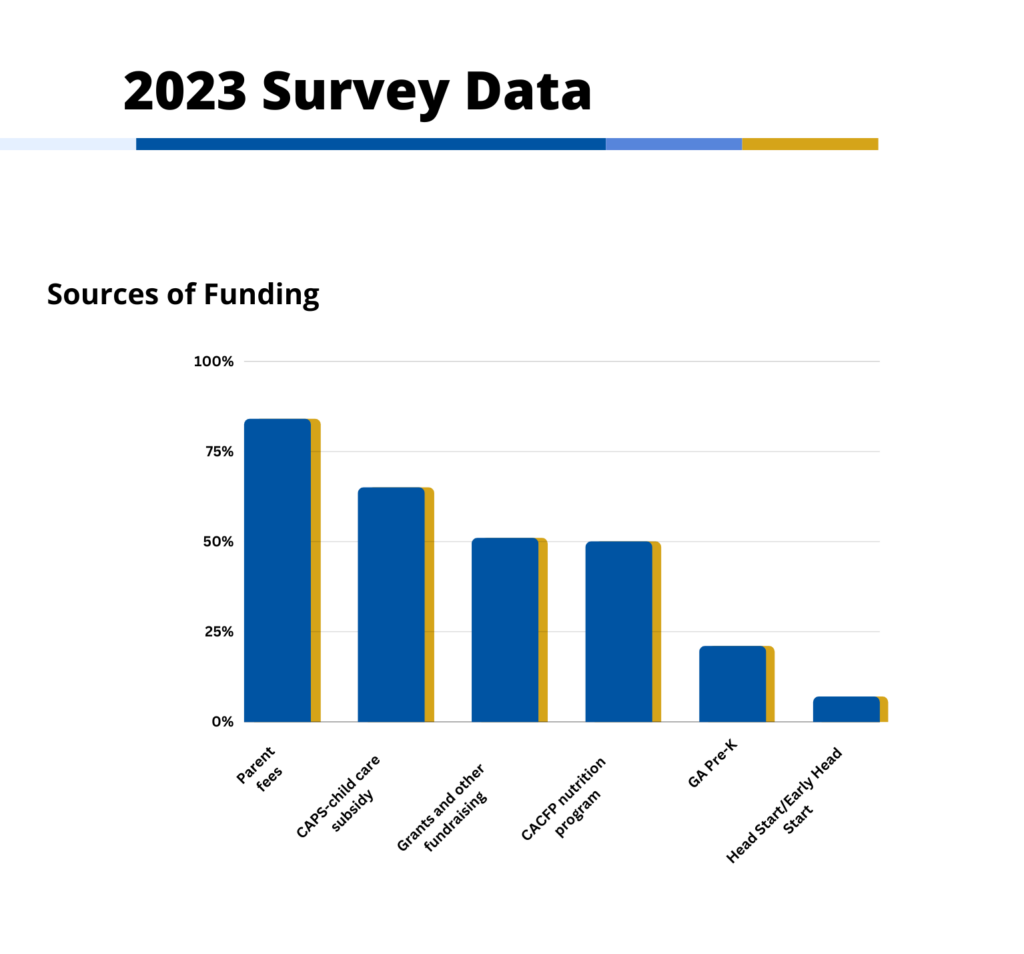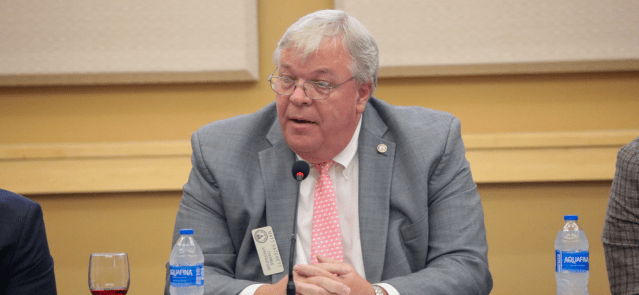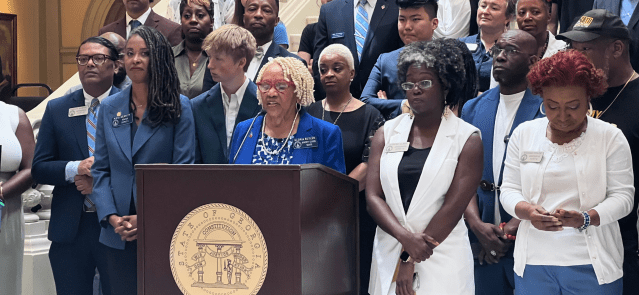Stay ahead of the curve as a political insider with deep policy analysis, daily briefings and policy-shaping tools.
Request a DemoAlready struggling child care providers brace for end of federal relief funds

Child care providers across Georgia are losing teachers, closing classrooms and seeing their waitlists to enroll new children grow, per a new statewide survey of providers. (Credit: Quality Care for Children).
Results of a survey of Georgia child care providers released last week found that most are struggling to fully staff their programs and to meet the growing demand for child care. And the imminent end of COVID-related federal funding that has stabilized many center- and home-based child care programs is expected to exacerbate these challenges.
What’s Happening
The survey of 430 child care providers conducted in April 2023 by Quality Care for Children (QCC), a nonprofit agency that provides training and certification to Georgia’s child care programs, includes these findings:
- 72% of child care centers experienced teacher shortages in the past three months.
- 78% of programs said they were having difficulty hiring new staff.
- 56% of providers have increased their new enrollment waitlists since COVID-19, with an average of 20 children waiting to enroll.
- 72% of respondents said they could serve more children if they had more staff.
- 35% of programs had to close classrooms due to teacher shortages.
The survey — which was sent to all 4,600 of the state’s licensed child care providers, and includes responses from 430 providers in 103 of Georgia’s 159 counties — confirms that the state and national child care workforce crisis that was already problematic before the pandemic is even worse now, said Ellyn Cochran, Quality Care for Children’s president and CEO.
Cochran cited the low wages paid to the industry’s mostly female workers as a primary reason for chronic understaffing of child care centers.
In Georgia, child care workers earned an average $12.58 per hour in 2022, according to the Bureau of Labor, making them among the lowest paid child care workers in the nation. Many workers have left the industry to pursue better pay, she said, noting that Amazon fulfillment centers offer $15 per hour and better benefits.
Some child care providers and workers have benefited over the past three years from an infusion of federal relief funding that is ending this fall.
The STABLE (Short-Term Assistance Benefit for Licensed Entities) grant program managed by the state Department of Early Care and Learning (DECAL) has provided $1.1 billion dollars in American Rescue Plan Act funds to Georgia child care providers and families. It has been used for workforce support, including new hires and pay raises; child care tuition relief; and to help providers with operational costs.
Why It Matters
The last round of STABLE payments to child care providers will go out in September, and must be spent by July 2024.
“Those stabilization grants have been a lifeline to an industry that was already struggling,” said Cochran, adding that in the absence of such funding, “many providers are going to have to make some tough choices. Are they going to raise parent fees to cover additional incentives to teachers, or will they have to cut those teachers’ pay again? And close more classrooms? That could be really devastating to the child care community.”
Cochran numbers among child advocates calling for an increase in state funding for child care.
Only 14% of children from low-income families in Georgia who are eligible for the federally-funded, state-administered Childcare and Parent Services (CAPS) program receive child care subsidies. CAPS funding in Georgia is currently limited to certain priority groups, including children who are homeless, in protective custody, have disabilities, have experienced domestic violence, and very low income families.

A budget analysis by the Georgia Budget and Policy Institute last month noted that “Georgia does the bare minimum to draw down all available federal resources” for child care, which it said is “inadequate given the needs of families and child care providers.” GBPI said the state could create significantly more subsidized child care slots for low-income families by investing more state dollars in the CAPS program.
QCC’s annual survey was sent to all 4,600 of the state’s licensed child care providers, and includes responses from 430 providers in 103 of Georgia’s 159 counties – 258 child care learning centers and 172 home-based child care programs.
According to DECAL, Georgia has approximately 3,100 child care learning centers and 1,500 family child care learning homes.
Also read:
“Georgia has lost thousands of preschool, day care teachers. Can the lottery help?“
“Playmaker Profile: Meet Georgia’s preschool and daycare chief”
“Georgia daycares miss out on millions in lottery dollars“
Contact Jill Jordan Sieder on Twitter @JOURNALISTAJILL or at [email protected].
Twitter @STATEAFFAIRSGA
Instagram @STATEAFFAIRSGA
Facebook @STATEAFFAIRSUS
LinkedIn @STATEAFFAIRS
Header image: Child care providers across Georgia are losing teachers, closing classrooms and seeing their waitlists to enroll new children grow, per a new statewide survey of providers. (Credit: Quality Care for Children).
Correction: The story was edited to clarify the budget analysis by Georgia Budget and Policy Institute, which emphasized the need for Georgia to invest more state dollars in subsidized child care, rather than to draw down more federal funding by increasing the state match, as the story indicated.
Professionals still face licensing delays amid state’s transition to online system
The Gist Georgia’s professionals and business owners are still struggling to obtain professional licenses in a timely manner. As the Secretary of State’s Office rolls out its new Georgia Online Application Licensing System to expedite the process, the efficiency of this new process is being put to the test. What’s Happening Thursday morning at the …
Controversy over AP African American Studies class grows
Rashad Brown has been teaching Advanced Placement African American Studies at Atlanta’s Maynard Jackson High School for three years. He’ll continue to do so — even though the state’s top education official removed it from the list of state-funded course offerings for the upcoming school year. While Brown prepares to start teaching his class on …
Students, teachers, lawmakers blast decision to end AP African American history classes
ATLANTA — A coalition of lawmakers, civil rights leaders, clergy, educators and students Wednesday called on the state’s education czar to rescind his decision to drop an advanced placement African American studies class from the state’s curriculum for the upcoming school year. “This decision is the latest attack in a long-running GOP assault on Georgia’s …
Kamala Harris’ presidential bid reinvigorates Georgia Democrats
Georgia Democrats have gained new momentum heading into the November election, propelled by President Joe Biden’s decision to bow out of his reelection bid and hand the reins to Vice President Kamala Harris. The historic decision, announced Sunday, is expected to prove pivotal in the national and state political arenas and breathe new life and …




